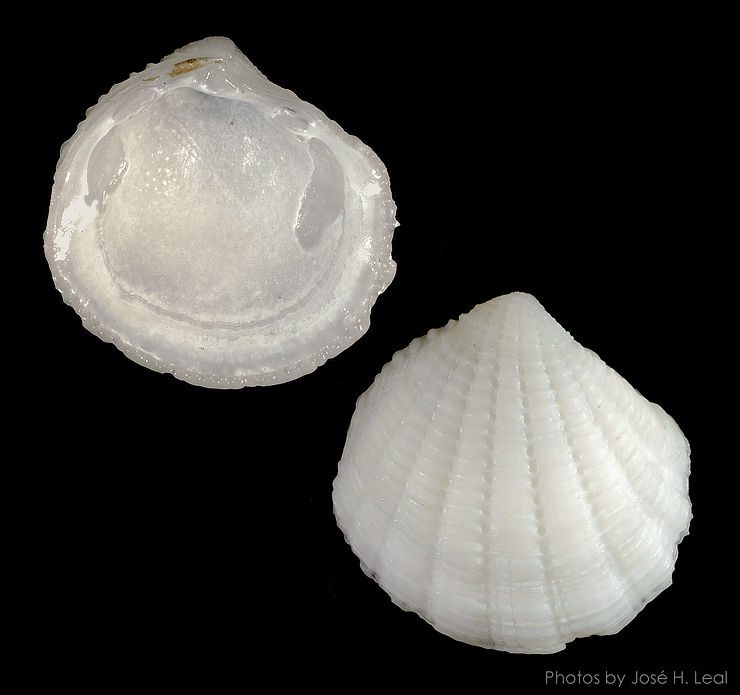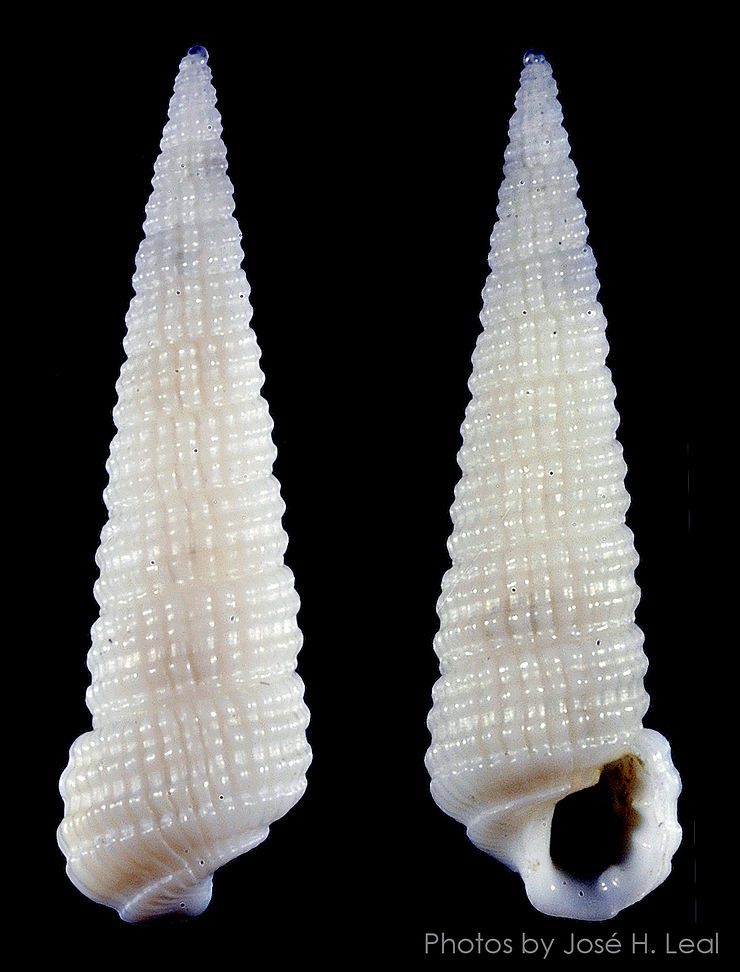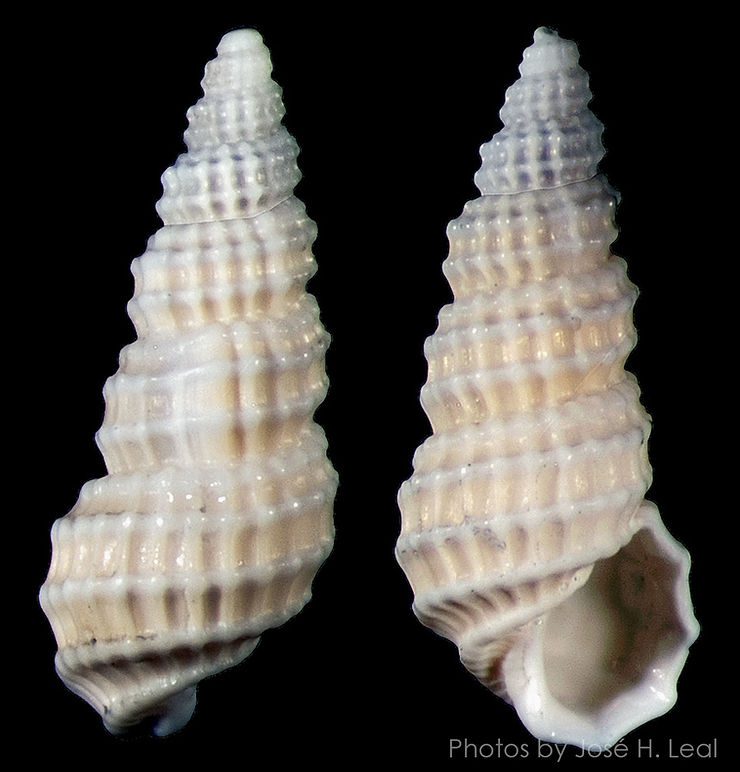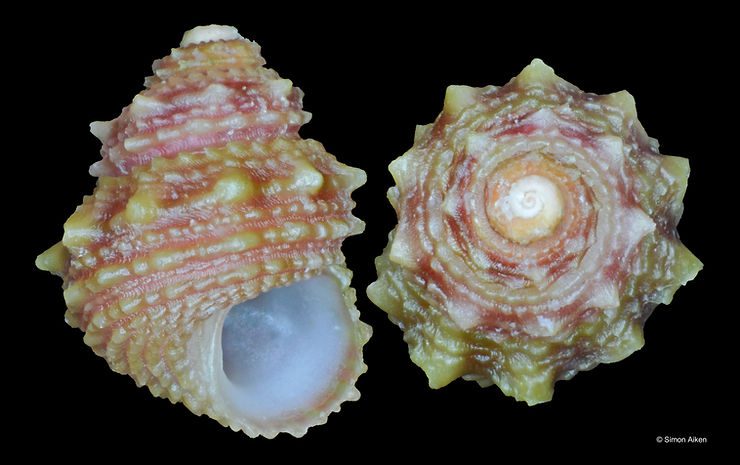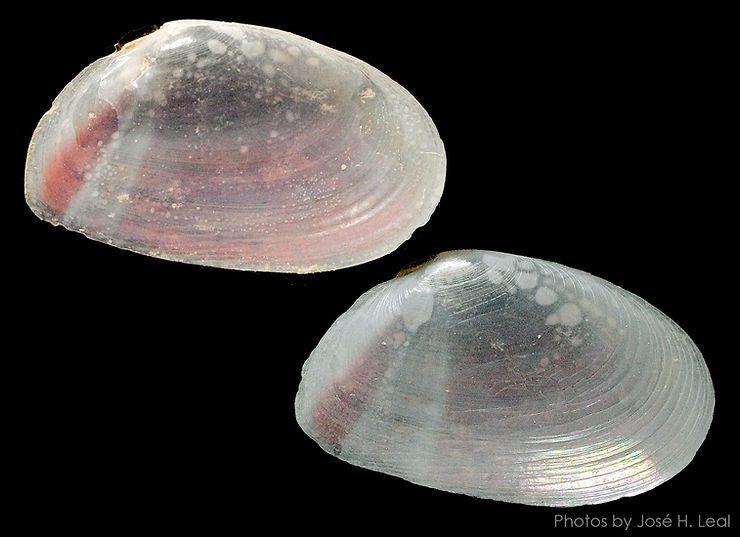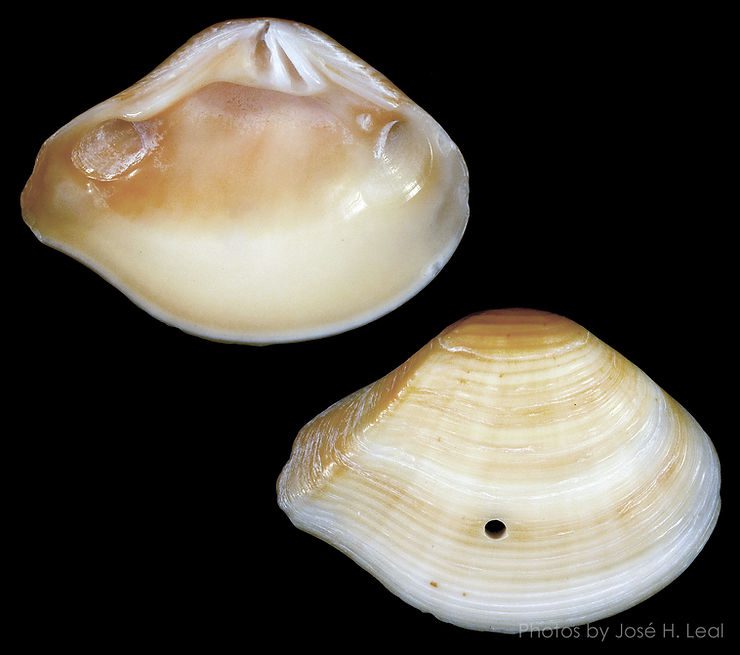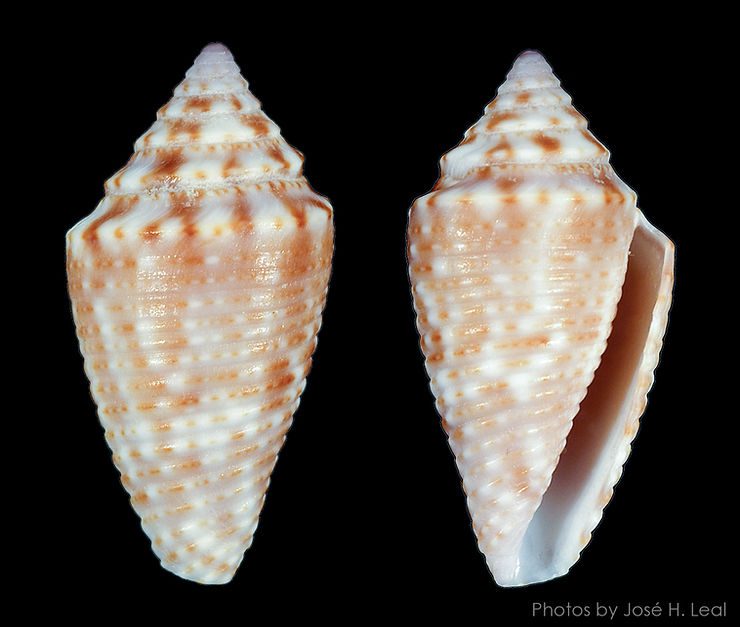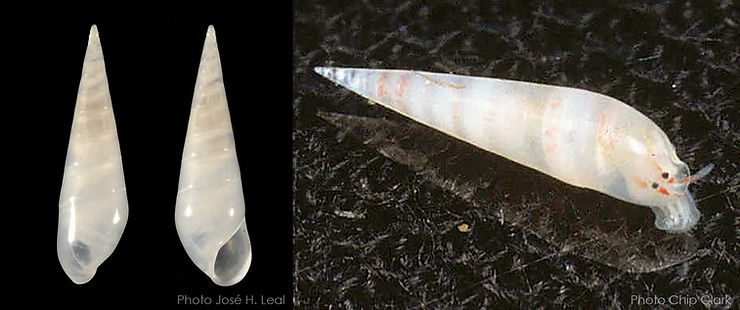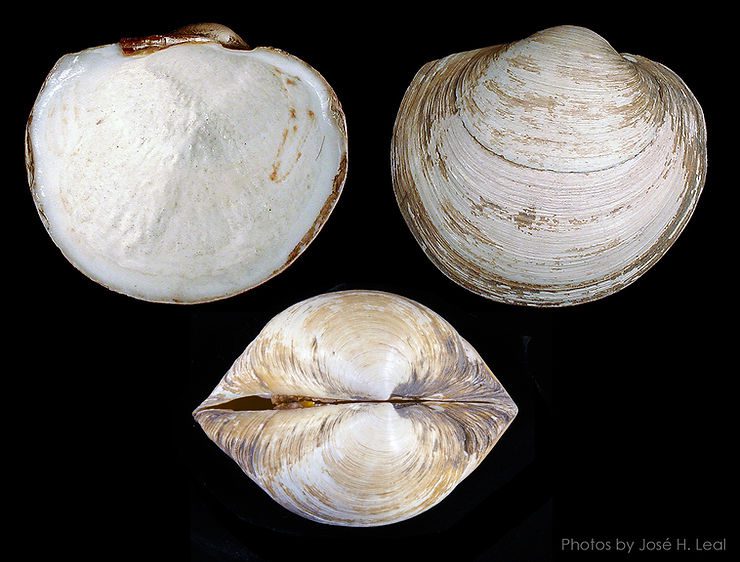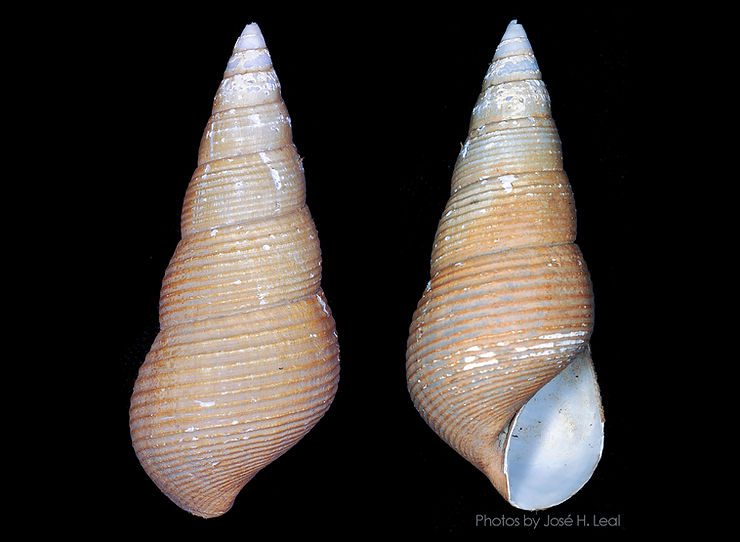
The Shell Museum’s Own Bone-eating Snails
This shell of the bone-eating snail Rubyspira osteovora Johnson et al., 2010 is part of the National Shell Museum collection, catalogue number BMSM 20687. It was retrieved, in March 2009, by Robert Vrijenhoek & Sharon Johnson, both of the Monterey Bay Aquarium Research Institute (MBARI), using their Remotely Operated Vehicle (ROV) Doc Ricketts at the Ruby whale fall, at 2,894 m (about 9,495 ft). It measures about 40 mm, and was donated to the Museum by Robert Vrijenhoek for display in our “Deep
